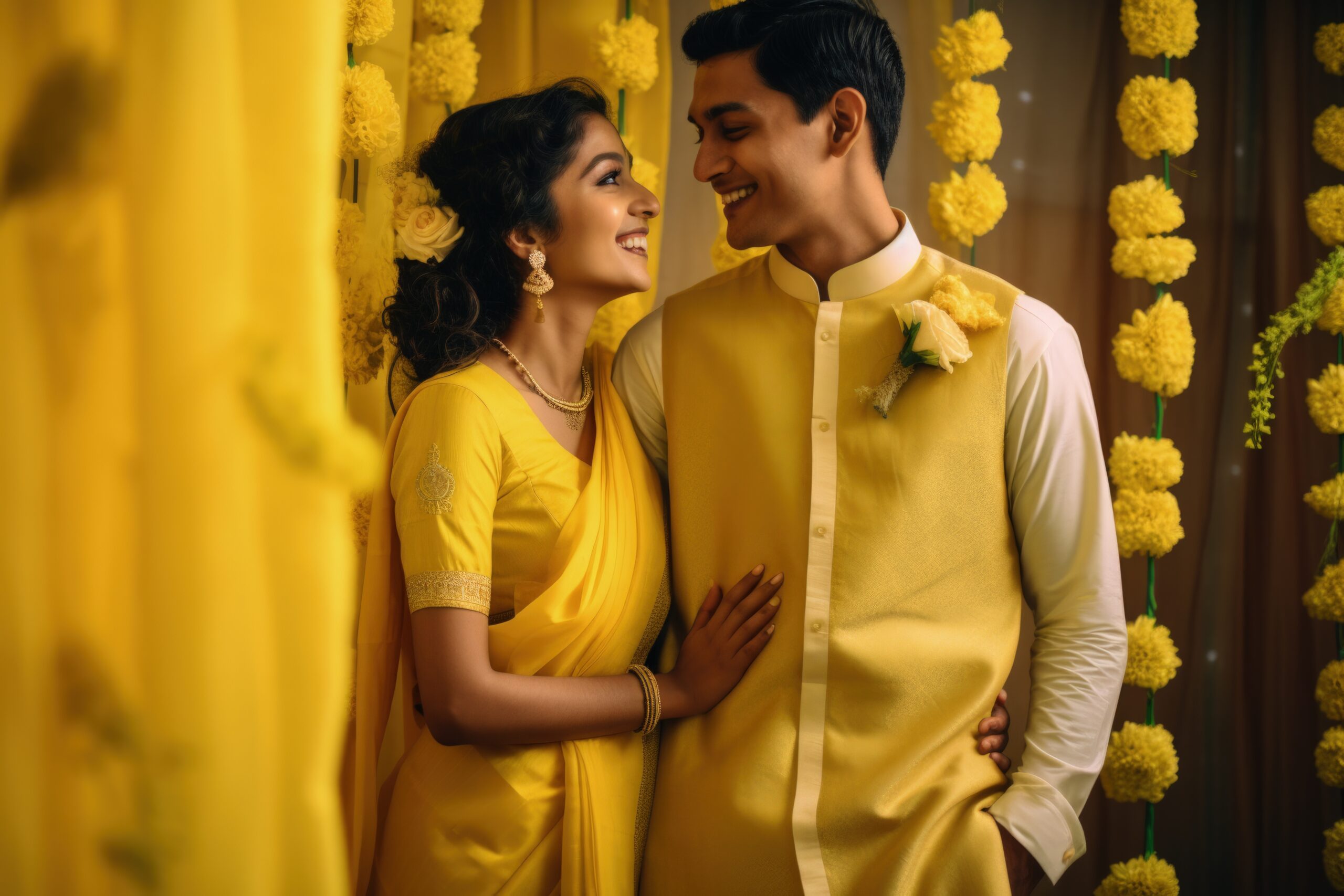Indian weddings are celebrated for their grandeur, intricate rituals, and the vibrant coming together of family and friends. As stunning as these celebrations are, there’s a growing trend among modern couples who seek to balance the extravagance of a traditional wedding with a minimalist approach that emphasizes meaning over excess.
In this blog, we explore the art of minimalism in Indian weddings and how couples today are creating events that maintain elegance, beauty, and rich cultural traditions without overwhelming opulence. For those who wish to incorporate simplicity without losing the vibrancy of tradition, here are insights into embracing minimalist principles in wedding planning.
1. The Rise of Minimalism: Why Couples are Choosing Simple Elegance
Minimalism isn’t about stripping away the essential aspects of a wedding but rather focusing on what matters most. For many couples, a minimalist wedding allows them to celebrate their union more intimately, making room for authentic connections and moments without unnecessary embellishments.
The minimalist approach is gaining traction, especially as couples prioritize sustainable choices, quality over quantity, and elements that resonate with their values. While traditional Indian weddings are often large in scale, many are realizing that minimalism can highlight cultural rituals in a way that feels authentic and refreshingly elegant. This approach allows for a sense of luxury and beauty while creating a more intentional experience for the couple and their guests.
2. Prioritizing Quality Over Quantity in Decor and Venue Choices
For couples embracing minimalism, the decor becomes a significant focus. Rather than an overwhelming array of colours and floral arrangements, the goal is to create an ambience that reflects the couple’s personalities and cultural heritage in a refined manner.
Choosing quality pieces and natural elements is one way to keep the decor understated yet stunning. For example, instead of elaborate, multi-layered stage setups, many couples are opting for a single, meaningful backdrop that reflects a specific cultural motif or family tradition. Thoughtful use of materials like handwoven textiles, local floral arrangements, and natural lighting can create an ambience that feels elegant yet warm, focusing on subtle beauty rather than lavishness.
3. Simplifying the Guest List: An Intimate Celebration with Close Ones
Minimalism in Indian weddings often starts with a carefully curated guest list. With family and social connections being an integral part of Indian culture, reducing the guest count can be a challenging decision. However, a smaller guest list can lead to a more personal experience, allowing the couple to spend quality time with loved ones and ensuring that each guest feels valued.
An intimate gathering also helps to cut down on logistical complications and costs, allowing for resources to be focused on creating a meaningful experience rather than simply managing a large crowd. Smaller gatherings bring people together in a way that feels intentional, encouraging moments of connection rather than crowded, impersonal interactions.
4. Embracing Eco-Conscious Choices for Sustainable Celebrations
Sustainability and minimalism often go hand in hand. Many couples are choosing eco-friendly alternatives that reduce waste, cut down on unnecessary elements, and allow them to celebrate in an environmentally responsible manner. From reusable decor items to opting for local vendors, sustainability can seamlessly integrate into wedding planning without taking away from the elegance of the event.
Consider using potted plants instead of cut flowers, which can later be gifted or planted as a symbol of the couple’s journey. Minimalist weddings also make room for DIY elements, where family members and friends can contribute to the decor or assist in personalized guest experiences. Thoughtfully designed digital invites, biodegradable materials, and low-impact transportation options all contribute to a wedding that’s as kind to the earth as it is beautiful.
5. Mindful Rituals: Focusing on the Core of Cultural Traditions
Indian weddings are steeped in rituals that vary across communities and regions, each with its own unique practices and significance. The minimalist approach allows couples to focus on the core rituals, honoring tradition without being overwhelmed by additional, sometimes superfluous, customs.
By concentrating on a few key rituals, couples can ensure that each moment feels meaningful and that family and guests can participate fully in these time-honored practices. For example, some couples choose to forego elaborate pre-wedding events and focus instead on the wedding day itself, simplifying the schedule and allowing for a more relaxed atmosphere. Minimalism here doesn’t mean disregarding traditions but distilling them into what feels most resonant for the couple.
6. Elegant Attire: Redefining Bridal and Groom Wear with Minimalist Trends
While traditional Indian wedding attire is known for its rich embroidery and bold colors, minimalist trends are making their way into wedding fashion. Many brides and grooms are opting for simpler, elegant designs that still reflect cultural heritage but in a more understated manner.
For brides, this could mean choosing a saree or lehenga in a muted colour palette with fine, subtle embroidery rather than heavily ornate designs. Grooms might opt for streamlined sherwanis or kurtas in neutral tones, focusing on tailored fits and high-quality fabrics. This trend toward simplicity allows the focus to be on the people and the event rather than the attire, making for a wedding that feels refined and comfortable.
7. Enhancing Guest Experience Through Personal Touches
Minimalism doesn’t mean sacrificing the guest experience; in fact, it often enhances it. Smaller, simpler weddings allow for more attention to detail in creating a warm, welcoming environment for guests. Many couples are personalizing their weddings by including thoughtful gestures like handwritten notes for each guest or incorporating family traditions that make loved ones feel appreciated.
Interactive elements, like setting up a guest book where friends and family can write messages, or share family stories that connect generations, offer guests a meaningful experience without needing to incorporate elaborate entertainment. By keeping things simple and personal, couples can foster an atmosphere of genuine warmth and connection.
8. Fostering an Atmosphere of Calm Amidst the Celebration
The minimalist approach offers a reprieve from the usual hustle and bustle of large Indian weddings, allowing the couple and their families to enjoy a sense of calm and presence. With fewer distractions, the focus remains on the couple, their story, and the emotions that come with uniting two families.
Minimalist weddings often prioritize wellness, whether through calm, scenic settings, quieter events, or even mindfulness practices before the ceremony. In a world of increasingly busy schedules and demands, this approach allows the couple and their guests to immerse themselves fully in the joy of the occasion without feeling rushed.
The rise of minimalism in Indian weddings marks a refreshing shift that embraces simplicity without sacrificing cultural richness. For modern couples, this approach offers a way to honour tradition while focusing on the aspects that truly matter—meaningful rituals, personal connections, and creating memories that resonate beyond the celebrations. In embracing minimalism, couples are choosing to celebrate their union with elegance, intention, and authenticity, making their wedding a reflection of not just their heritage but their values and vision for the future.



